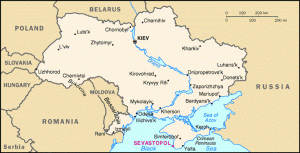I was happy to discover that sources on my research topic were plentiful in both the scholarly and the cyber world. The websites were typically more recently published than some of my scholarly sources, but there are some exceptions. The web sites are, as expected, more interactive and interesting to read than many of the scholarly sources simply because most have color photos. Most of my online sources were produced by organizations aiming to raise awareness for these groups, rather than scholars doing research like my print sources.
I’ve learned that each type of source has its use. For instance, scholarly journal articles are typically much more focused in scope and so to search for and use them your research questions must also be more narrowed. Books are daunting sources because they hold so much information, but again, if you narrow your scope you can limit yourselves to chapters within books, rather than read the entire thing. It is my website sources that have surprised me the most. After 3 years in college I had ultimately written off websites as being of any use in a formal research paper, but this project has changed my mind. Of course, a bibliography should not be built entirely upon websites, but as long as the site is credible it can be a great source for background information and media, as well as a springboard for other sources, whether cyber or in-print.
This project has certainly taught me to broaden my research parameters to include multiple types of sources. It has also showed me the benefits of breaking a large project into chunks and completing smaller tasks along the way. That is not a new discovery, but it is something that I often forget in my busy day-to-day life. I’ve also discovered just how useful certain online tools can be (the Evernote clipper tool is a great example.) Even though Evernote itself hasn’t been groundbreaking in this research process, the clipper tool has been refreshingly useful. Blogging on my paper topic has also helped me develop my ideas and think about my project in new ways.
Moving forward, I am going to focus on answering three questions: how did the lives of these tribes people change as a result of Soviet policy? How did they try to adapt to these changes? Were their adaptions successful?
I realize that these questions can may still change as I finish my research, however I believe they get at the heart of what it means for a culture to “disappear.” In order to answer these questions, I will need to understand tribal life before these Soviet policies, exactly how these Soviet policies affected the traditional way of life, and how these cultures have fared since. I believe all of my sources cover these aspects and more, but I will being by focusing on journal articles that have clearly stated theses and arguments to help me get on my way.
Below is a link to my updated annotated bibliography:
Annotated Bibliography with Web Sites


